Popular categories
Looking for a yarn?
Order DROPS Buttons

Olive wood No. 513
OrderClicking the ORDER button will redirect you to Wool Warehouse Direct Ltd website
Order DROPS Needles & Hooks
Clicking the ORDER button will redirect you to Wool Warehouse Direct Ltd website
The yarn cost is calculated from the pattern’s smallest size and the yarn’s cheapest product type. Looking for an even better price? You might find it on the DROPS Deals!
Good Times Overall
Knitted pants with straps for baby in DROPS Merino Extra Fine. Piece knitted top down with rib. Size 0 - 4 years
Change language:
English (US/in)- English (US/in)
- Česky
- Dansk
- Deutsch
- Eesti keel
- English (UK/cm)
- Español
- Français
- Íslenska
- Italiano
- Magyar
- Nederlands
- Norsk
- Polski
- Português
- Suomi
- Svenska
- English (UK/cm), Bulgaria
- English (UK/cm), Croatia
- English (UK/cm), Greece
- English (UK/cm), Latvia
- English (UK/cm), Lithuania
- English (UK/cm), Romania
- English (UK/cm), Slovenia
- Česky, Slovakia
#goodtimesoverall
DROPS design: Pattern me-087-byYarn group B
----------------------------------------------------------
SIZE:
0/1 - 1/3 - 6/9 - 12/18 months (2 - 3/4) years
Size equals approx. kid’s height in cm:
48/52 - 56/62 - 68/74 - 80/86 (92 -104)
Size equals approx. kid’s height in feet:
1ft/1ft8 - 1ft 10/2ft - 2ft3/2ft5 - 2ft7/2ft9 (3ft – 3ft5)
Finished measurements:
Hip measurements: 48-52-56-60 (64-68) cm = 19"-20½"-22"-23⅝" (25¼"-26¾")
Full length: 32-42-51-56 (61-69) cm = 12½"-16½"-20"-22" (24"-27⅛")
All measurements in charts are in cm.
MATERIALS:
DROPS MERINO EXTRA FINE from Garnstudio (belongs to yarn group B)
150-200-200-200 (250-300) g color 47, sage green
DROPS BUTTON NO 513: 2 pieces for all sizes
NEEDLES:
DROPS CIRCULAR NEEDLE SIZE 4 MM = US 6: Length: 40 cm = 16"
DROPS CIRCULAR NEEDLE SIZE 3 MM = US 2.5: Length: 40 cm = 16"
DROPS DOUBLE POINTED NEEDLES SIZE 4 MM = US 6
DROPS DOUBLE POINTED NEEDLES SIZE 3 MM = US 2.5
The technique MAGIC LOOP can be used – you then only need circular needle of 80 cm = 32" in each size.
KNITTING GAUGE:
21 stitches in width and 28 rows vertically in stockinette stitch = 10 x 10 cm = 4" x 4".
NOTE! Remember that needle size is only a suggestion. If you have too many stitches on 10 cm = 4" switch to larger needles. If you have too few stitches on 10 cm = 4" switch to smaller needles.
-------------------------------------------------------
Alternative Yarn – See how to change yarns here
Yarn Groups A to F – Use the same pattern and change the yarn here
Yarn usage using an alternative yarn – Use our yarn converter here
-------------------------------------------------------
Order DROPS Buttons

Olive wood No. 513
OrderClicking the ORDER button will redirect you to Wool Warehouse Direct Ltd website
Order DROPS Needles & Hooks
Clicking the ORDER button will redirect you to Wool Warehouse Direct Ltd website
The yarn cost is calculated from the pattern’s smallest size and the yarn’s cheapest product type. Looking for an even better price? You might find it on the DROPS Deals!
Pattern instructions
EXPLANATION FOR THE PATTERN:
----------------------------------------------------------
GARTER STITCH (back and forth):
Knit all rows.
1 ridge vertically = knit 2 rows.
INCREASE TIP:
All increases are done from the right side.
Work until 2 stitches remain before marker, make 1 yarn over, purl 1, knit 2 (marker is in the middle of these stitches), purl 1, make 1 yarn over.
On next row from wrong side work yarn overs twisted into rib as follows:
BEFORE MARKER:
Purl/knit yarn over in back loop of yarn over.
AFTER MARKER:
Slip yarn over on to right needle knitwise, slip it back on left needle (i.e. yarn over is twisted) and purl/knit yarn over in front loop .
DECREASE TIP:
Decrease 1 stitch on each side of the marker thread as follows:
Work until there are 3 stitches left before marker thread, knit 2 stitches together, knit 2 (marker thread is in the middle of these 2 stitches), slip 1 stitch as if to knit, knit 1, pass the slipped stitch over the knitted stitch (= 2 stitches decreased).
----------------------------------------------------------
START THE PIECE HERE:
----------------------------------------------------------
PANTS – SHORT OVERVIEW OF THE PIECE:
Worked top down. Work front piece and back piece back and forth separately before slipping them together and working around the body. Divide body into leg and work each leg separately in the round on double pointed needles.
FRONT PIECE:
Cast on 30-30-34-38 (42-42) stitches on a circular needle size 3 MM = US 2.5 with DROPS Merino Extra Fine. Purl 1 row from wrong side.
Work rib, begin from right side as follows:
Work 3 edge stitches in GARTER STITCH – read description above, * knit 2, purl 2 * over the next 8-8-12-12 (16-16) stitches, knit 2-2-0-2 (0-0), purl 1, knit 2, insert 1 marker in the middle of these 2 stitches, purl 1, knit 2-2-0-2 (0-0), * purl 2, knit 2 *, work from *-* over the next 8-8-12-12 (16-16) stitches and 3 edge stitches in garter stitch. Work 1 row from wrong side with knit over knit, purl over purl and garter stitch over garter stitch.
Now work buttonholes on next row from right side and increase 1 stitch on each side of marker as follows:
Work 3 edge stitches in garter stitch, knit 2 together, make 1 yarn over (buttonhole), continue with rib and increase 1 stitch on each side of marker – read INCREASE TIP, until 5 stitches remain on row, make 1 yarn over, slip 1 stitch on to right needle knitwise, knit 1, pass slipped stitch over stitch worked (buttonhole) and 3 edge stitches in garter stitch.
Continue rib (purl yarn overs for buttonholes on next row). Work increase on each side of marker twisted in rib, i.e. in size 0/1 - 1/3 - 12/18 months work first increase twisted knit from wrong side and in size 6/9 months, 2 years and 3/4 years work first increase twisted purl from wrong side.
Increase like this on every row from right side 9-9-11-13 (15-15) times in total = 48-48-56-64 (72-72 ) stitches.
When piece measures 7-7-8-10 (12-12) cm = 2¾"-2¾"-3⅛"-4" (4¾"-4¾"), put piece aside and work back piece.
BACK PIECE:
Work first 2 straps as follows:
STRAP:
Cast on 8 stitches on circular needle size 3 MM = US 2.5 with DROPS Merino Extra Fine. Work in garter stitch until piece measures approx. 13 to 17 cm = 5⅛" to 6¾". Put piece aside and knit another strap the same way.
Now slip straps together for back piece on next row from right side as follows:
Work over the last strap worked as follows: 8 stitches in garter stitch, cast on 14-14-18-22 (26-26) stitches, work in garter stitch over the 8 stitches on the other strap = 30-30-34-38 (42-42) stitches. Work 1 row from wrong side as follows: 8 stitches in garter stich, purl 14-14-18-22 (26-26) stitches, 8 stitches in garter stitches.
Work rib, begin from right side as follows:
Work 3 edge stitches in garter stitch, * knit 2, purl 2 * over the next 8-8-12-12 (16-16) stitches, knit 2-2-0-2 (0-0), purl 1, knit 2, insert 1 marker in the middle of these 2 stitches, purl 1, knit 2-2-0-2 (0-0), * purl 2, knit 2 *, work from *-* over the next 8-8-12-12 (16-16) stitches and 3 edge stitches in garter stitch.
Work 1 row from wrong side with knit over knit, purl over purl and garter stitch over garter stitch.
On next row from right side, increase 1 stitch on each side of marker as on front piece. Continue pattern like this and increase as front piece = 48-48-56-64 (72-72) stitches.
When piece measures 7-7-8-10 (12-13) cm = 2¾"-2¾"-3⅛"-4" (4¾"-5⅛"), work back piece together with front piece and cast on stitches between parts from right side as follows:
Work over back piece as before, cast on 8-12-12-8 (8-12) stitches, now work over stitch on front piece as before, cast on 8-12-12-8 (8-12) stitches = 112-120-136-144 (160-168) stitches.
BODY:
Displace round so that it begins mid back (i.e.. between the 2 middle knit stitches on back piece).
Work rib in the round as follows: Knit 1, * purl 2, knit 2 *, work from *-* until 3 stitches remain, purl 2 and knit 1. Insert 1 marker at the beginning of the round = mid back.
When piece measures 4 cm = 1½" from where parts were put together, switch to circular needle size 4 MM = US 6. Knit 1 round and decrease 12-10-18-18 (26-26) stitches evenly = 100-110-118-126 (134-142) stitches.
Continue piece in stockinette stitch.
To get a better fit work the pants higher at the back than at the front. This is done by working short rows back and forth as follows:
Begin from right side and knit 9-10-11-10 (11-11) stitches past marker. Turn, tighten yarn and purl 18-20-22-20 (22-22) stitches. Turn, tighten yarn and knit 27-30-33-30 (33-33) stitches. Turn, tighten yarn. Continue to like this by working 9-10-11-10 (11-11) stitches more on every turn until a total of 54-60-66-80 (88-88) stitches have been worked, turn and work until mid back.
Now work piece in the round in stockinette stitch over all stitches. REMEMBER THE KNITTING GAUGE!
When piece measures 16-23-29-31 (31-30) cm = 6¼"-9"-11⅜"-12¼" (12¼"-11¾") from where parts were put together (measured on mid front), divide piece for legs as follows:
Bind off the first 3-4-5-6 (6-6) stitches, knit 44-47-49-51 (55-59) stitches, bind off the next 6-8-10-12 (12-12) stitches, knit 44-47-49-51 (55-59) stitches and bind off the last 3-4-5-6 (6-6) stitches. Fasten off. Slip stitches in one side of piece on 1 thread or on another needle and work leg as explained below. NOW MEASURE THE PIECE FROM HERE!
LEG:
= 44-47-49-51 (55-59) stitches. Distribute stitches on 4 double pointed needles size 4 MM = US 6 and work in stockinette stitch in the round – insert 1 marker on the inside of leg.
When leg measures 3 cm = 1⅛", decrease 1 stitch on each side of marker - read DECREASE TIP!
Decrease like this every 3-4-5-6 (6-8) cm = 1⅛"-1½"-2"-2⅜" (2⅜"-3⅛") 3-3-3-3 (4-4) times in total = 38-41-43-45 (47-51) stitches.
When leg measures 13-14-17-20 (25-34) cm = 5⅛"-5½"-6¾"-8" (9¾"-13⅜") from division, knit 1 round and increase 6-7-5-7 (9-9) stitches evenly = 44-48-48-52 (56-60) stitches.
Switch to double pointed needles size 3 MM = US 2.5. Work rib (knit 2/purl 2). Bind off by knitting when rib measures 5 cm = 2".
Slip stitches from the other leg on to double pointed needles size 4 MM = US 6 and work as first leg.
ASSEMBLY:
Sew opening between the legs (i.e. sew stitches bind off mid back to stitches bind off mid front). Sew the buttons on to the straps.
This pattern has been corrected. Click here to see the correction/s.
Decrease tip added.
The pattern is updated. Correction under body all sizes. Measurement chart updated.
Diagram
All measurements in charts are in cm.

What can you do with our patterns? You can share DROPS patterns online, using the pattern original picture, materials, name and number. But you are NOT ALLOWED to reproduce the complete pattern digitally in any way. Yarn stores are welcome to use the DROPS pattern database to promote the sale of our assortment. You can print out our patterns, make as many copies as you’d like. The only thing we ask is that you don't make any changes / additions to the original printed document. And that the patterns according to the DROPS philosophy are given out to the consumers for free. Editorials that wish to publish our patterns in printed books or magazines can contact us for more information. The sale of garments based on DROPS patterns is permitted as long as they are sold as single items or per order. Further commercial use of the patterns is not permitted. It has to be clearly stated that the garment is made based on a design from DROPS DESIGN. The use of clothing labels of which DROPS DESIGN forms part is conditioned by the inclusion of the following text: “A DROPS DESIGN made by …..”. The use of DROPS photos for marketing purposes/sales is only permitted in connection with the use/sale of DROPS products. The photos may not be cut or edited and the logo should be clearly visible.
We reserve the right to withdraw the permission for use of our patterns at any time, notwithstanding the reason.
Each of our patterns has specific tutorial videos to help you.
These step-by-step tutorials might also help you:
Why is the knitting/crochet tension so important?
Knitting tension is what determines the final measurements of your work, and is usually measured per 10 x 10 cm. It is provided like so: number of stitches in width x number of rows in height - eg: 19 stitches x 26 rows = 10 x 10 cm.
The knitting tension is very individual; some people knit/crochet loosely while others work tightly. You adjust the knitting tension with the needle size, which is why the suggested needle size only serve as a guide! You need to adjust this (up or down) to ensure that YOUR knitting tension matches the knitting tension provided in the pattern. If you work with a different knitting tension than provided you will have a different yarn consumption, and your work will have different measurements than what the pattern suggests.
The knitting tension also determines which yarns can replace each other. As long as you achieve the same knitting tension you can replace one yarn with another.
See DROPS lesson: How to measure your tension/gauge
See DROPS video: How to make a gauge tension swatch
How do I know how many balls of yarn I need?
The required amount of yarn is provided in grams, eg: 450 g. To calculate how many balls you’ll need you first need to know how many grams are in 1 ball (25g, 50g or 100g). This information is available if you click on the individual yarn quality on our pages. Divide the amount required with the amount of each ball. For example, if each ball is 50g (the most common amount), the calculation will be as follows: 450 / 50 = 9 balls.
Can I use a different yarn than what the pattern suggests?
The important thing when changing from one yarn to another is that the knitting/crochet tension remains the same. This is so that the measurements of the finished piece will be the same as on the sketch provided. It is easier to achieve the same knitting tension using yarns from the same yarn group. It is also possible to work with multiple strands of a thinner yarn to achieve the knitting tension of a thicker one. Please try our yarn converter. We recommend you to always work a test swatch.
Please NOTE: when changing yarn the garment might have a different look and feel to the garment in the photo, due to individual properties and qualities of each yarn.
See DROPS lesson: Can I use a different yarn than the one mentioned in the pattern?
What are the yarn groups?
All our yarns are categorised into yarn groups (from A to F) according to thickness and knitting tension – group A contains the thinnest yarns and group F the thickest. This makes it easier for you to find alternative yarns to our patterns, should you wish to switch yarn. All yarns within the same group have a similar knitting tension and can easily replace each other. However, different yarn qualities have different structures and properties which will give the finished work a unique look and feel.
How do I use the yarn converter?
At the top of all our patterns you’ll find a link to our yarn converter, which is a helpful tool should you wish to use a different yarn than suggested. By filling in the yarn quality you wish to replace, the amount (in your size) and number of strands, the converter will present good alternative yarns with the same knitting tension. Additionally it will tell you how much you’ll require in the new qualities and whether you’ll need to work with multiple strands. Most skeins are 50g (some are 25g or 100g).
If the pattern is worked with multiple colours, every colour will have to be converted separately. Similarly, if the pattern is worked with several strands of different yarns (for example 1 strand Alpaca and 1 strand Kid-Silk) you will have to find alternatives for each, individually.
Why do you show discontinued yarns in the patterns?
Since different yarns have different qualities and textures we have chosen to keep the original yarn in our patterns. However, you can easily find options among our available qualities by using our yarn converter, or simply pick a yarn from the same yarn group.
It is possible that some retailers still have discontinued yarns in stock, or that someone has a few skeins at home that they would like to find patterns for.
The yarn converter will provide both alternative yarn as well as required amount in the new quality.
What size should I knit?
If you think it's hard to decide what size to make, it can be a good idea to measure a garment you own already and like the size of. Then you can pick the size by comparing those measures with the ones available in the pattern's size chart.
You'll find the size chart at the bottom of the pattern.
See DROPS lesson: How to read size chart
Why do I get the wrong knitting tension with the suggested needle size?
The needle size provided in the pattern serves only as a guide, the important thing is to follow the knitting tension. And since knitting tension is very individual, you will have to adjust the needle size to ensure that YOUR tension is the same as in the pattern – maybe you’ll have to adjust 1, or even 2 needle sizes, up or down to achieve the correct tension. For this, we recommend that you work test swatches.
Should you work with a different knitting tension than the one provided, the measurements of the finished garment might deviate from the measurement sketch.
See DROPS lesson: How to measure your tension/gauge
See DROPS video: How to make a gauge tension swatch
Why is the pattern worked top-down?
Working a garment top-down provides more flexibility and room for personal adjustment. For example it is easier to try the garment on while working, as well as making adjustments to length of yoke and shoulder caps.
The instructions are carefully explaining every step, in the correct order. Diagrams are adjusted to the knitting direction and are worked as usual.
How do I work according to a knitting diagram?
The diagram depicts all rows/rounds, and every stitch seen from the right side. It is read from bottom to top, from right to left. 1 square = 1 stitch.
When working back and forth, every other row is worked from the right side and every other row is worked from the wrong side. When working from the wrong side, the diagram will have to be worked reversed: from left to right, knit stitches are purled, purl stitches are knit etc.
When working in the round every round is worked from the right side and the diagram are worked from right to left on all rounds.
See DROPS lesson: How to read knitting diagrams
How do I work according to a crochet diagram?
The diagram depicts all rows/rounds, and every stitch seen from the right side. It is worked from bottom to top, from right to left.
When working back and forth every other row is worked from the right side: from right to left and every other row is worked from the wrong side: from left to right.
When working in the round, every row in the diagram are worked from the right side, from right to left.
When working a circular diagram you start in the middle and work your way outwards, counter clockwise, row by row.
The rows usually start with a given number of chain stitches (equivalent to the height of the following stitch), this will either be depicted in the diagram or explained in the pattern.
See DROPS lesson: How to read crochet diagrams
How do I work several diagrams simultaneously on the same row/round?
Instructions for working several diagrams after each other on the same row/round, will often be written like so: “work A.1, A.2, A.3 a total of 0-0-2-3-4 times". This means you work A.1 once, then A.2 is worked once, and A.3 is repeated (in width) the number of times provided for your size – in this case like so: S = 0 times, M = 0 times, L=2 times, XL= 3 times and XXL = 4 times.
The diagrams are worked as usual: begin with the first row in A.1, then work the first row in A.2 etc.
See DROPS lesson: How to read knitting diagrams
See DROPS lesson: How to read crochet diagrams
Why are the sleeves shorter in larger sizes?
The total width of the garment (from wrist-to-wrist) will be larger in the larger sizes, despite the actual sleeves being shorter. The larger sizes have longer sleeve caps and wider shoulders, so there will be a good fit in all sizes.
Where on the garment is the length measured?
The measurement sketch/schematic drawing provides information regarding the full length of the garment. If it’s a jumper or a jacket the length is measured from the highest point on the shoulder (usually closest to the neckline), and straight down to the bottom of the garment. It is NOT measured from the tip of shoulder. Similarly, the length of yoke is measured from the highest point on the shoulder and down to where yoke is split into body and sleeves.
See DROPS lesson: How to read a schematic drawing
What is a repeat?
Diagrams are often repeated on the round or in height. 1 repeat is the diagram the way it appears in the pattern. If it says to work 5 repeats of A.1 in the round, then you work A.1 a total of 5 times after/next to each other in the round. If it says to work 2 repeats of A.1 vertically/in height you work the entire diagram once, then begin again at the start and work the entire diagram one more time.
Why does the piece start with more chain stitches than it’s worked with?
Chain stitches are slightly narrower than other stitches and to avoid working the cast-on edge too tight, we simply chain more stitches to begin with. The stitch count will be adjusted on the following row to fit the pattern and measurement sketch.
Why increase before the rib edge when the piece is worked top-down?
The rib edge is more elastic and will contract slightly compared to, for example, stocking stitch. By increasing before the rib edge, you avoid a visible difference in width between the rib edge and the rest of the body.
Why increase in the cast-off edge?
It’s very easy to cast off too tightly, and by making yarn overs while casting off (and simultaneously casting these off) you avoid a too tight cast off edge.
See DROPS video: How to bind off with yarn overs (yo)
How do I increase/decrease on every 3rd and 4th row/round alternately?
To achieve an even increase (or decrease) you can increase on, for example: every 3rd and 4th row alternately, like so: work 2 rows and increase on the 3rd row, work 3 rows and increase on the 4th. Repeat this until the increase is complete.
See DROPS lesson: Increase or decrease 1 st on every 3rd and 4th row alternately
How can I work a jacket in the round instead of back and forth?
Should you prefer to work in the round instead of back and forth, you may of course adjust the pattern. You’ll need to add steeks mid-front (usually 5 stitches), and follow the instructions. When you would normally turn and work from the wrong side, simply work across the steek and continue in the round. At the end you’ll cut the piece open, pick up stitches to work bands, and cover the cut edges.
See DROPS video: How to knit steeks and cut open
Can I work a jumper back and forth instead of in the round?
Should you prefer to work back and forth instead of in the round, you may of course adjust the pattern so you work the pieces separately and then assemble them at the end. Divide the stitches for the body in 2, add 1 edge stitch in each side (for sewing) and work the front and back pieces separately.
See DROPS lesson: Can I adapt a pattern for circular needles into straight needles?
Why is the pattern slightly different than what I see in the photo?
Pattern repeats can vary slightly in the different sizes, in order to get the correct proportions. If you’re not working the exact same size as the garment in the photo, yours might deviate slightly. This has been carefully developed and adjusted so that the complete impression of the garment is the same in all sizes.
Make sure to follow instructions and diagrams for your size!
How do I make a women’s size garment into a men’s size one?
If you have found a pattern you like which is available in women’s size it’s not very difficult to convert it to men’s size. The biggest difference will be the length of sleeves and body. Start working on the women size that you think would fit across the chest. The additional length will be worked right before you cast off for the armhole/sleeve cap. If the pattern is worked top-down you can add the length right after the armhole or before the first decrease on sleeve.
Regarding additional yarn amount, this will depend on how much length you add, but it is better with a skein too many than too few.
How do I prevent a hairy garment from shedding?
All yarns will have excess fibres (from production) that might come off as lint or shedding. Brushed yarns (ie hairier yarns) have more of these loose, excess fibres, causing more shedding.
Shedding also depends on what is worn under or over the garment, and whether this pulls at the yarn fibres. It’s therefore not possible to guarantee that there will be no shedding
Below are some tips on how to get the best result when working with hairier yarns:
1. When the garment is finished (before you wash it) shake it vigorously so the looser hairs come off. NOTE: do NOT use a lint roller, brush or any method that pulls at the yarn.
2. Place the garment in a plastic bag and put it in your freezer - the temperature will cause the fibres to become less attached to each other, and excess fibres will come off easier.
3. Leave in the freezer for a few hours before taking it out and shaking it again.
4. Wash the garment according to the instructions on the yarn label.
Why does my garment pill?
Pilling is a natural process that happens to even the most exclusive of fibers. It's a natural sign of wear and tear that is hard to avoid, and that is most visible in high friction areas of your garment like a sweater's arms and cuffs.
You can make your garment look as new by removing the pilling, using a fabric comb or a pill/lint remover.
In the meantime, you can read the questions and answers that others have left to this pattern or join the DROPS Workshop on Facebook to get help from fellow knitters/crocheters!
Good Times Overall |
|
 |
 |
Knitted pants with straps for baby in DROPS Merino Extra Fine. Piece knitted top down with rib. Size 0 - 4 years
DROPS Baby 45-7 |
|
|
---------------------------------------------------------- EXPLANATION FOR THE PATTERN: ---------------------------------------------------------- GARTER STITCH (back and forth): Knit all rows. 1 ridge vertically = knit 2 rows. INCREASE TIP: All increases are done from the right side. Work until 2 stitches remain before marker, make 1 yarn over, purl 1, knit 2 (marker is in the middle of these stitches), purl 1, make 1 yarn over. On next row from wrong side work yarn overs twisted into rib as follows: BEFORE MARKER: Purl/knit yarn over in back loop of yarn over. AFTER MARKER: Slip yarn over on to right needle knitwise, slip it back on left needle (i.e. yarn over is twisted) and purl/knit yarn over in front loop . DECREASE TIP: Decrease 1 stitch on each side of the marker thread as follows: Work until there are 3 stitches left before marker thread, knit 2 stitches together, knit 2 (marker thread is in the middle of these 2 stitches), slip 1 stitch as if to knit, knit 1, pass the slipped stitch over the knitted stitch (= 2 stitches decreased). ---------------------------------------------------------- START THE PIECE HERE: ---------------------------------------------------------- PANTS – SHORT OVERVIEW OF THE PIECE: Worked top down. Work front piece and back piece back and forth separately before slipping them together and working around the body. Divide body into leg and work each leg separately in the round on double pointed needles. FRONT PIECE: Cast on 30-30-34-38 (42-42) stitches on a circular needle size 3 MM = US 2.5 with DROPS Merino Extra Fine. Purl 1 row from wrong side. Work rib, begin from right side as follows: Work 3 edge stitches in GARTER STITCH – read description above, * knit 2, purl 2 * over the next 8-8-12-12 (16-16) stitches, knit 2-2-0-2 (0-0), purl 1, knit 2, insert 1 marker in the middle of these 2 stitches, purl 1, knit 2-2-0-2 (0-0), * purl 2, knit 2 *, work from *-* over the next 8-8-12-12 (16-16) stitches and 3 edge stitches in garter stitch. Work 1 row from wrong side with knit over knit, purl over purl and garter stitch over garter stitch. Now work buttonholes on next row from right side and increase 1 stitch on each side of marker as follows: Work 3 edge stitches in garter stitch, knit 2 together, make 1 yarn over (buttonhole), continue with rib and increase 1 stitch on each side of marker – read INCREASE TIP, until 5 stitches remain on row, make 1 yarn over, slip 1 stitch on to right needle knitwise, knit 1, pass slipped stitch over stitch worked (buttonhole) and 3 edge stitches in garter stitch. Continue rib (purl yarn overs for buttonholes on next row). Work increase on each side of marker twisted in rib, i.e. in size 0/1 - 1/3 - 12/18 months work first increase twisted knit from wrong side and in size 6/9 months, 2 years and 3/4 years work first increase twisted purl from wrong side. Increase like this on every row from right side 9-9-11-13 (15-15) times in total = 48-48-56-64 (72-72 ) stitches. When piece measures 7-7-8-10 (12-12) cm = 2¾"-2¾"-3⅛"-4" (4¾"-4¾"), put piece aside and work back piece. BACK PIECE: Work first 2 straps as follows: STRAP: Cast on 8 stitches on circular needle size 3 MM = US 2.5 with DROPS Merino Extra Fine. Work in garter stitch until piece measures approx. 13 to 17 cm = 5⅛" to 6¾". Put piece aside and knit another strap the same way. Now slip straps together for back piece on next row from right side as follows: Work over the last strap worked as follows: 8 stitches in garter stitch, cast on 14-14-18-22 (26-26) stitches, work in garter stitch over the 8 stitches on the other strap = 30-30-34-38 (42-42) stitches. Work 1 row from wrong side as follows: 8 stitches in garter stich, purl 14-14-18-22 (26-26) stitches, 8 stitches in garter stitches. Work rib, begin from right side as follows: Work 3 edge stitches in garter stitch, * knit 2, purl 2 * over the next 8-8-12-12 (16-16) stitches, knit 2-2-0-2 (0-0), purl 1, knit 2, insert 1 marker in the middle of these 2 stitches, purl 1, knit 2-2-0-2 (0-0), * purl 2, knit 2 *, work from *-* over the next 8-8-12-12 (16-16) stitches and 3 edge stitches in garter stitch. Work 1 row from wrong side with knit over knit, purl over purl and garter stitch over garter stitch. On next row from right side, increase 1 stitch on each side of marker as on front piece. Continue pattern like this and increase as front piece = 48-48-56-64 (72-72) stitches. When piece measures 7-7-8-10 (12-13) cm = 2¾"-2¾"-3⅛"-4" (4¾"-5⅛"), work back piece together with front piece and cast on stitches between parts from right side as follows: Work over back piece as before, cast on 8-12-12-8 (8-12) stitches, now work over stitch on front piece as before, cast on 8-12-12-8 (8-12) stitches = 112-120-136-144 (160-168) stitches. BODY: Displace round so that it begins mid back (i.e.. between the 2 middle knit stitches on back piece). Work rib in the round as follows: Knit 1, * purl 2, knit 2 *, work from *-* until 3 stitches remain, purl 2 and knit 1. Insert 1 marker at the beginning of the round = mid back. When piece measures 4 cm = 1½" from where parts were put together, switch to circular needle size 4 MM = US 6. Knit 1 round and decrease 12-10-18-18 (26-26) stitches evenly = 100-110-118-126 (134-142) stitches. Continue piece in stockinette stitch. To get a better fit work the pants higher at the back than at the front. This is done by working short rows back and forth as follows: Begin from right side and knit 9-10-11-10 (11-11) stitches past marker. Turn, tighten yarn and purl 18-20-22-20 (22-22) stitches. Turn, tighten yarn and knit 27-30-33-30 (33-33) stitches. Turn, tighten yarn. Continue to like this by working 9-10-11-10 (11-11) stitches more on every turn until a total of 54-60-66-80 (88-88) stitches have been worked, turn and work until mid back. Now work piece in the round in stockinette stitch over all stitches. REMEMBER THE KNITTING GAUGE! When piece measures 16-23-29-31 (31-30) cm = 6¼"-9"-11⅜"-12¼" (12¼"-11¾") from where parts were put together (measured on mid front), divide piece for legs as follows: Bind off the first 3-4-5-6 (6-6) stitches, knit 44-47-49-51 (55-59) stitches, bind off the next 6-8-10-12 (12-12) stitches, knit 44-47-49-51 (55-59) stitches and bind off the last 3-4-5-6 (6-6) stitches. Fasten off. Slip stitches in one side of piece on 1 thread or on another needle and work leg as explained below. NOW MEASURE THE PIECE FROM HERE! LEG: = 44-47-49-51 (55-59) stitches. Distribute stitches on 4 double pointed needles size 4 MM = US 6 and work in stockinette stitch in the round – insert 1 marker on the inside of leg. When leg measures 3 cm = 1⅛", decrease 1 stitch on each side of marker - read DECREASE TIP! Decrease like this every 3-4-5-6 (6-8) cm = 1⅛"-1½"-2"-2⅜" (2⅜"-3⅛") 3-3-3-3 (4-4) times in total = 38-41-43-45 (47-51) stitches. When leg measures 13-14-17-20 (25-34) cm = 5⅛"-5½"-6¾"-8" (9¾"-13⅜") from division, knit 1 round and increase 6-7-5-7 (9-9) stitches evenly = 44-48-48-52 (56-60) stitches. Switch to double pointed needles size 3 MM = US 2.5. Work rib (knit 2/purl 2). Bind off by knitting when rib measures 5 cm = 2". Slip stitches from the other leg on to double pointed needles size 4 MM = US 6 and work as first leg. ASSEMBLY: Sew opening between the legs (i.e. sew stitches bind off mid back to stitches bind off mid front). Sew the buttons on to the straps. |
|

|
|
|
Have you made this or any other of our designs? Tag your pictures in social media with #dropsdesign so we can see them! Do you need help with this pattern?You'll find tutorial videos, a Comments/Questions area and more by visiting the pattern on garnstudio.com. © 1982-2024 DROPS Design A/S. We reserve all rights. This document, including all its sub-sections, has copyrights. Read more about what you can do with our patterns at the bottom of each pattern on our site. |
|
With over 40 years in knitting and crochet design, DROPS Design offers one of the most extensive collections of free patterns on the internet - translated to 17 languages. As of today we count 309 catalogs and 11624 patterns - 11615 of which are translated into English (US/in).
We work hard to bring you the best knitting and crochet have to offer, inspiration and advice as well as great quality yarns at incredible prices! Would you like to use our patterns for other than personal use? You can read what you are allowed to do in the Copyright text at the bottom of all our patterns. Happy crafting!










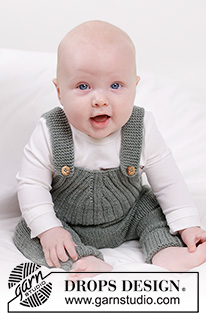







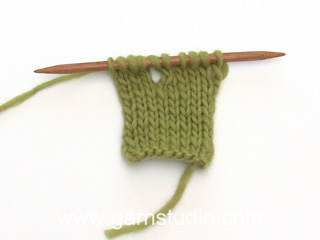


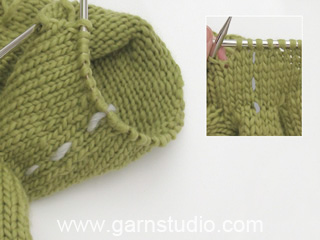




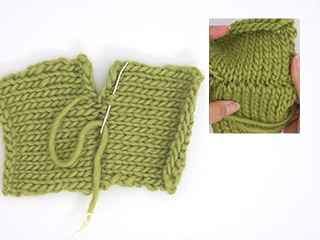
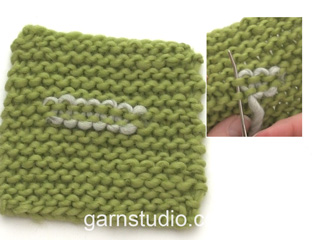

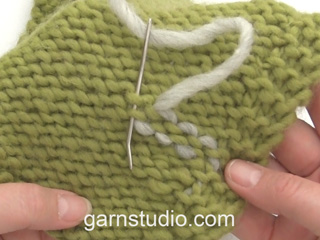
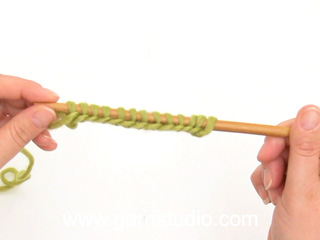
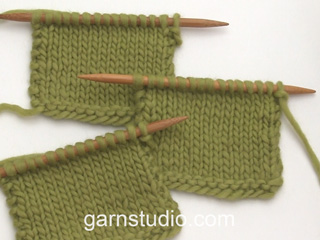


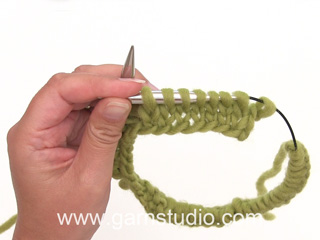
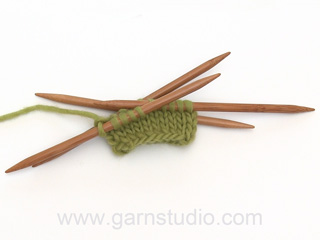
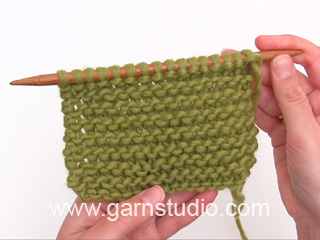
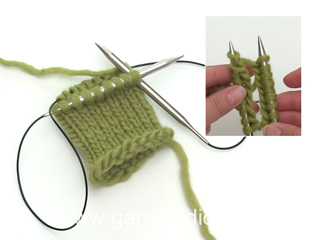





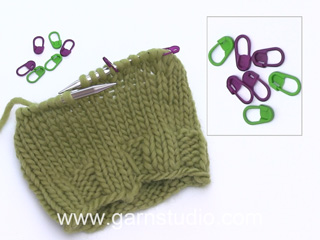



















Comments / Questions (11)
V návodu se píše, že ... ve výši 25 cm od spojení dílů rozdělíme pleteninu na dvě nohavičky... Nicméně v nákresu jsou 4 cm a pak 25 cm pleteno lícovým žerzejem. Můj dotaz tedy je, jestli plést 25 nebo 29 cm od spojení dílů po rozdělení na nohavičky. 25.10.2024 - 12:33
29.10.2024 - 16:53Stáhla jsem si návod na kalhoty pro miminko - 45-7. (6-9 měsíců). Bohužel jsem už tento odkaz na Vašich stránkách nenašla, proto pokládám dotaz zde. V návodu se píše, že ... ve výši 25 cm od spojení dílů rozdělíme pleteninu na dvě nohavičky... Nicméně v nákresu jsou 4 cm a pak 25 cm pleteno lícovým žerzejem. Můj dotaz tedy je, jestli plést 25 nebo 29 cm od spojení dílů po rozdělení na nohavičky.
29.10.2024 - 16:48Hallo, wieso arbeitet man in das Vorderteil ein Knopfloch ein? Für mich schaut es aus als würde man die Knöpfe ans Vorderteil annähen und das Knopfloch bei den Trägern brauchen? LG Johanna
20.10.2024 - 20:09Hola, puede ser que haya un error en la explicación de los ojales? En la foto pareciera que los ojales están en las tiras y no en el cuerpo. Gracias!
19.10.2024 - 18:35DROPS Design answered:
Hola Sofía, la foto parece ser errónea; los tirantes deberían quedar por dentro, por lo que los botones están por dentro, en el tirante y los ojales en el delantero, fuera. Enviaremos tu comentario al departamento de diseño.
20.10.2024 - 22:43Bonjour, Je veux faire la salopette pour un peu plus grand que 1/3 mois mais pas 6/9 mois . Avec des aiguilles 3.25 j'augmente la grandeur un peu pour le rib mais pour le pantalon 4.50 mm , seras ce trop grand.
29.09.2024 - 05:14DROPS Design answered:
Bonjour Pauline, nous ne sommes malheureusement pas en mesure de pouvoir adapter chacun de nos modèles à chaque demande; essayez de tricoter votre échantillon avec d'autres aiguilles si vous le souhaitez et recalculez si vous obtenez ainsi les bonnes mesures. Sinon, basez vous simplement sur le schéma des mesures et choisissez la taille la plus adaptée en fonction d'un vêtement du bébé dans la taille souhaitée. Bon tricot!
30.09.2024 - 09:08Jeg vil gerne købe ovennævnte i str. 12 md. Men jeg kan ikke printe mønsteret, mangler en printer, garnet skal marineblåt, kan I levere det, samt et trykt mønster? Venlig hilsen Annelise
03.09.2024 - 11:45DROPS Design answered:
Hej Annelise, klik på Bestil i opskriften og så beder du om en opskrift når du bestiller garnet, så vil butikken løse det :)
06.09.2024 - 09:54Hej Jeg er ny i strikning og forstår ikke hvordan jeg "forskyder omgangen" når for- og bagstykke skal stikkes sammen? Kan I give mig en helt udførlig forklaring på hvordan jeg gør? Ikke bare "flyt mærket". Hvordan strikkes hele den første omgang efter at der er slået masker op mellem for og bagstykke? Er muligvis lidt tungnem men kan simpelthen ikke få det til at give mening. På forhånd tak. Mvh. Nicoline
17.08.2024 - 11:57DROPS Design answered:
Hej Nicoline, når du forskyder omgangen sætter du 1 mærke midt bagpå (imellem de 2 midterste retmasker), du kan strikke om til der hvor omgangen starter, eller så klipper du tråden og starter ved mærket og strikker nøjagtig som beskrevet :) Når du skal skifte til rundpind 4, så gør du det midt bagpå (ved det nye mærke).
21.08.2024 - 09:57Hallo, in der Anleitung steht im Abschnitt Rumpfteil: bei einer Länge von xx cm ab dem Zusammensetzen der Teile wird die Arbeit für die Beine geteilt. Laut dem Diagramm wird es 4 cm nach dem Zusammensetzen geteilt. Welche Angabe ist richtig? Vielen Dank
04.05.2024 - 15:33DROPS Design answered:
Liebe Karolina, die 4 cm in der Skizze sind nur für die Taille, die Arbeit misst 12 bis 26 von dem Zusammensetzen der Teile bis Verteilung für die Beine. Viel Spaß beim Stricken!
06.05.2024 - 08:04Der står under 'Ryg og forstykke', at man skal "Forskyd omgangen så den starter midt bagpå". Hvordan forskydes omgangen?
13.03.2024 - 20:06DROPS Design answered:
Hej Kristina, du flytter mærket, så du kan udgå fra det når du begynder at strikke forkortede pinde fra mærket midt bagpå :)
18.03.2024 - 15:00Hallo, In der Anleitung wird bei dem Bein-Abschnitt auf einen Abnahmetipp verwiesen. Leider kann ich ihn in der Anleitung nicht finden. Könnt ihr mir dabei weiterhelfen? LG
03.02.2024 - 23:16DROPS Design answered:
Liebe Sophie, danke für den Hinweis, es wird wie bei diesem Video abgenommen. Viel Spaß beim stricken!
05.02.2024 - 08:45